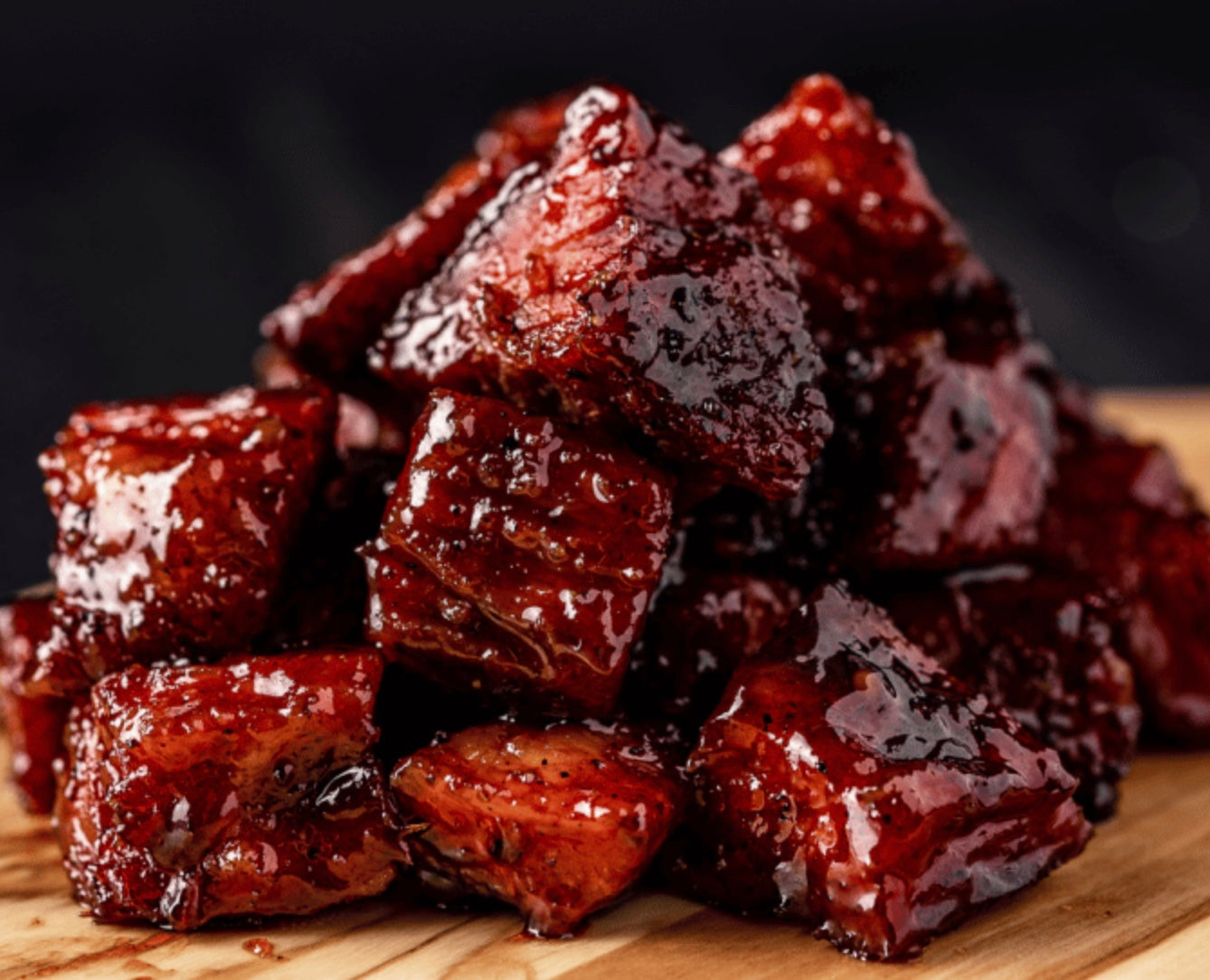If you’ve ever been lucky enough to visit a Kansas City BBQ joint, you might have seen them on the menu — burnt ends. Smoky, caramelised cubes of beef, each bite a perfect balance of bark, tenderness, and fat. They’re rich, indulgent, and disappear off plates faster than a free beer on a hot day.
But burnt ends weren’t always BBQ royalty. In fact, they were never meant to be served at all.
From Scraps to Star of the Show
The story starts with brisket — a cut made up of two distinct muscles:
-
The flat (first cut) — leaner, longer, and more uniform in shape; ideal for slicing.
-
The point (second cut) — thicker, more heavily marbled, and separated from the flat by a layer of fat known as the deckle.
Traditionally, pitmasters in the US smoked the whole brisket low and slow until tender, then sliced the flat for serving. The bark-covered ends of the fattier point, however, were trimmed away because they didn’t suit neat slices.
Those trimmings were smoky, chewy, and loaded with flavour — but they were considered scraps. Pitmasters would toss them into a pan for anyone hanging around the counter. In Kansas City’s Arthur Bryant’s BBQ in the 1970s, customers came to love these “freebies,” and demand quickly turned them into a menu item of their own.
Kansas City’s Claim to Fame
Kansas City is now considered the burnt ends capital of the world. Traditionally made from the point end of the brisket — never the flat — burnt ends are double-smoked, cubed, and often glazed in sauce for a sticky, bark-rich bite. They’re served in sandwiches, on platters, or just piled high in a tray.
Other BBQ regions have since claimed their own spin — from pork belly burnt ends in Memphis to creative twists in other US BBQ hubs — but the KC classic remains unmatched.
Why You Rarely See Them in Australia
While packer’s cut briskets from producers like Riverine, Jack’s Creek, and even Costco are now easier to find, burnt ends still aren’t common here. Why?
-
Different BBQ culture — Even with access to whole briskets, many Australian BBQ joints slice and serve the entire cut rather than trimming off the point for burnt ends.
-
High meat costs — Brisket remains a premium purchase in Australia, so most pitmasters aim for maximum yield rather than setting aside a portion for double-smoking.
-
Time and labour — Authentic burnt ends require an extra smoking step, making them more work for already busy smokers.
How to Make Your Own Burnt Ends at Home
You don’t have to wait for a trip to Kansas City to try them. You can make burnt ends at home with brisket point or pork belly.
-
Smoke your brisket point (or pork belly) low and slow with your choice of rub:
-
Black Angus for classic, peppery KC-style burnt ends.
-
Heatwave for a sweet-heat finish that caramelises beautifully.
-
-
Cube into bite-sized pieces.
-
Toss in your favourite BBQ sauce (try Trailblazer or Barnyard Brew).
-
Return to the smoker for another hour or two until caramelised.
The result? Rich, smoky nuggets with a sticky, bark-coated exterior and melt-in-your-mouth centre.


